Black bear sightings on the South Shore raise questions. Here are some answers.
So many bear questions, so little time.
A black bear traveling north from Plymouth has been seen on a porch, in yards, crossing a street, taking a swim and coming face to face with a dog in Cohasset before heading to World's End in Hingham the beginning of the week reemerging in Marshfield by last Friday.
Now he − or possibly another bear − was spotted by a Quincy police officer near the BJ's Wholesale Club on Crown Colony Drive late Tuesday, July 27.
You have to wonder, what is he −or they − up to? (Hint: sex is definitely involved.)
We'll try to answer many of your questions.
Sightings of a black bear were first reported in May as it traveled through Taunton, Fall River, Dartmouth, New Bedford, Acushnet and Marion.
More: Black bear spotted in Quincy
As bear reports moved north to Plymouth, Carver and Lakeville, it wasn't clear whether there was one bear, two or even more.
That question was somewhat resolved when dual sightings were confirmed in Lakeville and Carver on May 31.
One bear, two bears or more on the South Shore?
"I still think all the sightings down south were one bear, but suddenly, as it made its way into Plymouth, it seemed the sightings split," said David Wattles, a biologist for MassWildlife.
Since then, one of the bears has continued north. Sightings have been reported in towns including Plymouth, Plympton, Marshfield, Pembroke, Scituate, Cohasset, Hull and Hingham.
"We do not know how many bears are in the Southeast region from these reports," said Nicole McSweeney, the assistant director of outreach and education at MassWildlife. "We know there is certainly more than one bear from the reports, and likely a few more that are staying out of the spotlight."
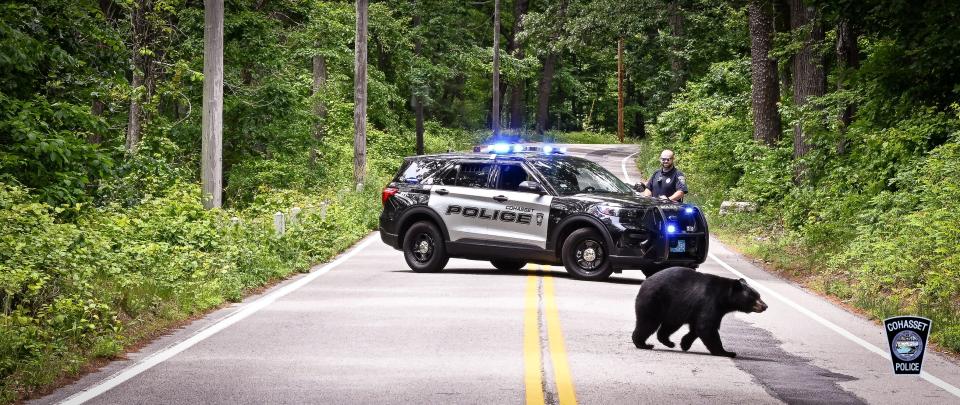
Weymouth and Braintree police have not reported any sightings so far, and a spokesperson for the Quincy Police Department said they have not received any reports that a bear may be coming their way.
The Cohasset dog encounter was Monday, when Katie Dunn recorded a video of her 6-year-old Great Pyrenees, Lars, facing off with a growling bear in her family's backyard.
The incident was “shocking and scary,” she told Storyful.com.
The video footage shows a large white dog near the edge of the yard peering over bushes toward a bear. People in the background are heard asking why Lars is wagging his tail, and someone says, “Come on, Lars. It’s just a black bear in the backyard. Don’t worry.”
Great Pyrenees dogs are livestock guardians bred to deter and fight off predators, Dunn told Storyful. She and her family were afraid that Lars might attack the bear to defend them, so they tried to act like “it was not a big deal and just a friendly animal in the yard.”
Lars was taken inside and the bear swam away in the pond behind the family's Jerusalem Road home.
More: Where is the South Shore bear now? More photos from his travels
How much do black bears weigh?
While the sex of the (at least) two bears has not been confirmed, McSweeney said the one seen in Plymouth is believed to be a male about 2 years old, given its appearance and behavior so far.
"The distance of travel is not unusual (for males)," McSweeney said.
Yearlings, or bears 1 to 2 years old, generally leave their mother after around 17 months in a process known as dispersal.
"Dispersing males travel long distances to establish a new territory," McSweeney said. "It is looking for space and potential mates."
Females do not usually travel so far as they mature and enter breeding age around 3 to 4 years old. Size and other physical differences, such as body shape (males have boxier builds), make it easier to tell the sex of the bears as they mature.
McSweeney said her agency does not have a weight estimate for the bear. A male that age can weigh from 100 to 120 pounds, according to the website bear.org.
At full maturity, males can weigh up to 600 pounds, although its more often 100 to 300 pounds less than that. They can reach a standing height of 7 feet.
How many black bears are there in Massachusetts?
American black bears – Ursus americanus, should it come up on trivia night – are endemic to North America. The National Park Service estimates 750,000 of them are in the U.S.
According to MassWildlife, the state's bear population is easily over 4,500, with an expected annual increase of 8%. The species has long been common in the central and western parts of the state and is slowly expanding eastward.
Despite the occasional appearance of black bears, which are the only bear species in the state, the South Shore is not considered part of the bears' normal range.
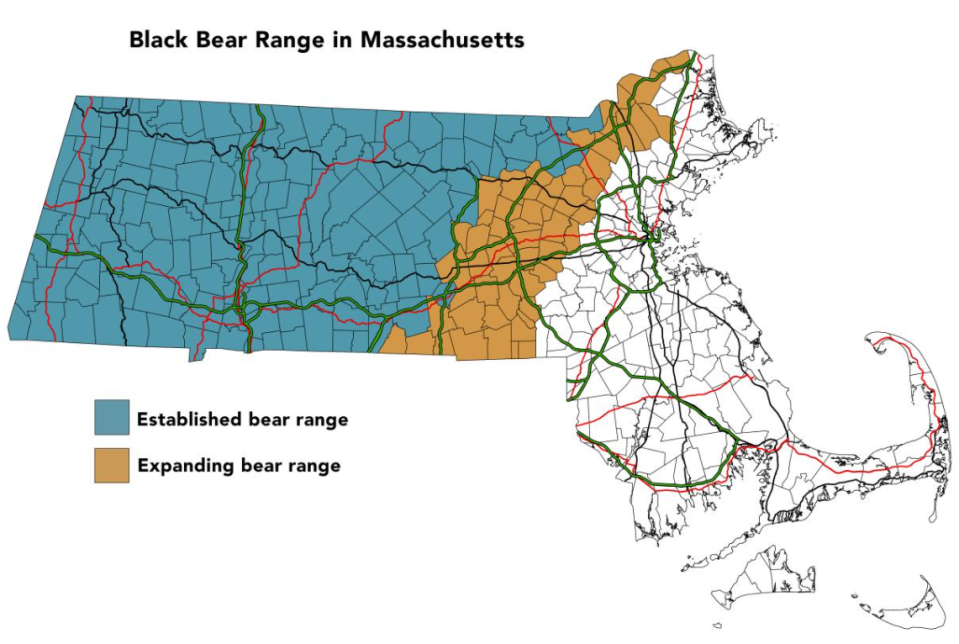
Given the bears' overall population increase, they are listed as being of "least concern" for extinction by the International Union for Conservation of Nature.
While an exact figure for the Southeastern Massachusetts bear population may be hard to pin down, their presence is not new to the area.
A dubbed Boo Boo drew an equal amount of attention in 2021 as it made its way north from Wareham to the South Shore before returning to the South Coast, where it died from injuries after it was hit by a car on Interstate 95 in Marion on June 24.
Bear sightings continued into 2022.
"We kind of had this last year where we think three to five different bears at different points of the summer moved through different parts of Southeastern Massachusetts, so it's becoming a more regular thing," Wattles said.
Where are the bears being seen statewide?
A statewide black bear interactive map has been developed by MassBears, a collaborative research project by MassWildlife, the Massachusetts Cooperative Fish and Wildlife Research Unit, Amherst College and UMass-Amherst. The map has sightings from 2019 on. The 2023 sightings are being added regularly, although the recent regional sightings are not yet on the map.
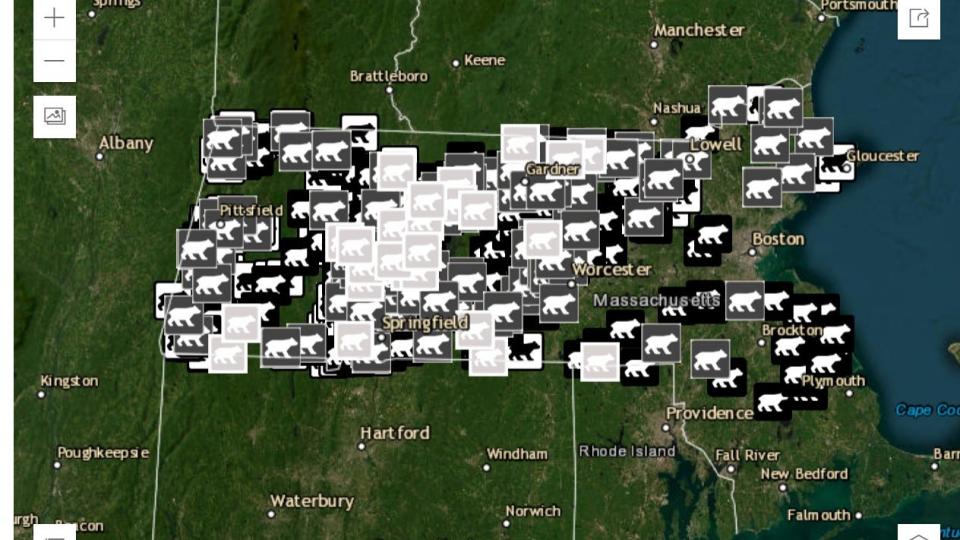
What do black bears do all year?
According to MassWildlife and other sources, black bears typically start to hibernate – or “den” – in November and December. They emerge from March to mid-April.
Black bears mate in June and July, but embryonic development does not begin until November or December. Cubs are born in late January/early February.
Female bears, or sows, reproduce every other year and usually have two or three cubs per litter.
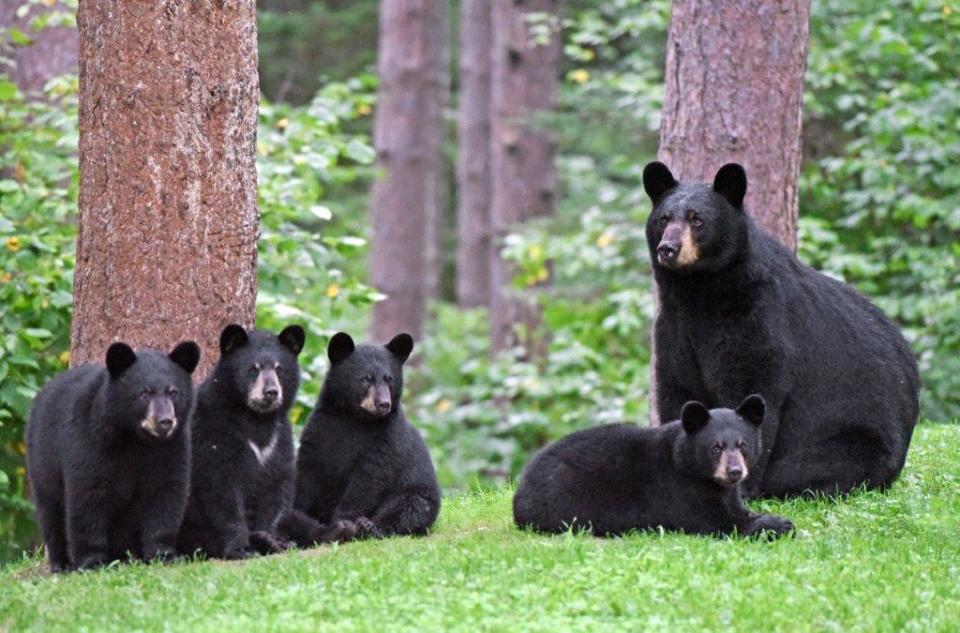
While black bears can live into their 30s in captivity, most do not make it that far, according to a 15-page document called “Coexisting with Black Bears in Massachusetts” co-authored by wildlife experts at UMass-Amherst and MassWildlife.
Mortality is highest among young dispersing bears because of inexperience, competition, movement into unfamiliar territory in pursuit of food and a settlement area, as well as the sort of human-bear interactions that led to Boo Boo's death.
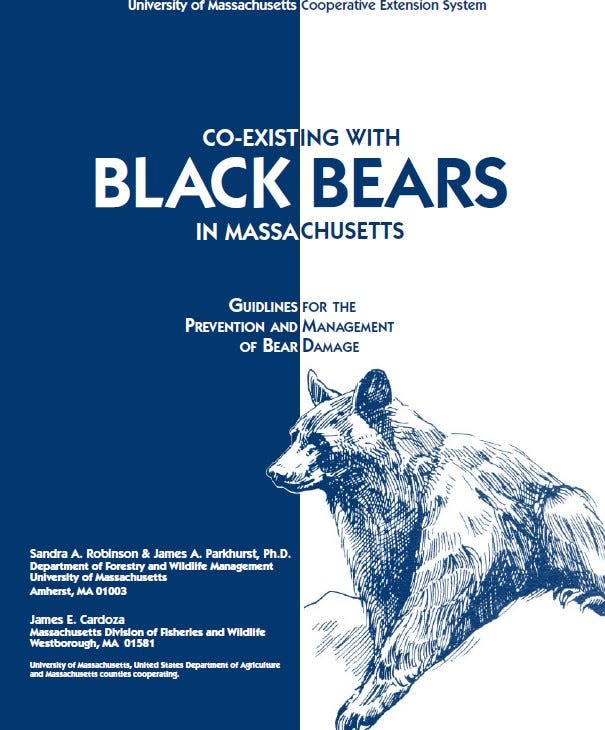
What is the South Shore bear up to?
The bear isn't just trying to show he's not a failure-to-launch sort of cub.
"June is also the peak of the mating season for bears, so there will be lots of activity and movement associated with mating," McSweeney said. "Additionally, bears are searching for food at a time of year when natural foods like berries are still not available."
Being omnivores, black bears will eat whatever they can get their paws on, whether vegetable, insect or animal.
Is the state planning to relocate the bear?
"MassWildlife and other related agencies will only take steps to relocate the bear if it is in danger or creating a dangerous situation for others," McSweeney said.
MassWildlife and other related agencies will only take steps to relocate the bear if it is in danger or creating a dangerous situation for others.
Nicole McSweeney, assistant director of outreach and education at MassWildlife
If such a situation does occur, she said the Massachusetts Environmental Police or MassWildlife will provide advice and determine if a response from the state Large Animal Response Team is necessary.
McSweeney and other experts and officials say the best thing residents can do when seeing a bear is nothing.
More: Buster the bear continues his travels. Here's where he was last seen
"The mere presence of a bear in a populated area is not a public safety threat, and the bear will usually leave the area on its own," she said. "If left alone, the bear will most likely move back into a forested area where it can establish and settle into its new territory."
While many local police departments are using their Facebook pages to report sightings and provide updates to residents, they do not need to be contacted whenever an uneventful sighting occurs.
What should I do to keep bears away?
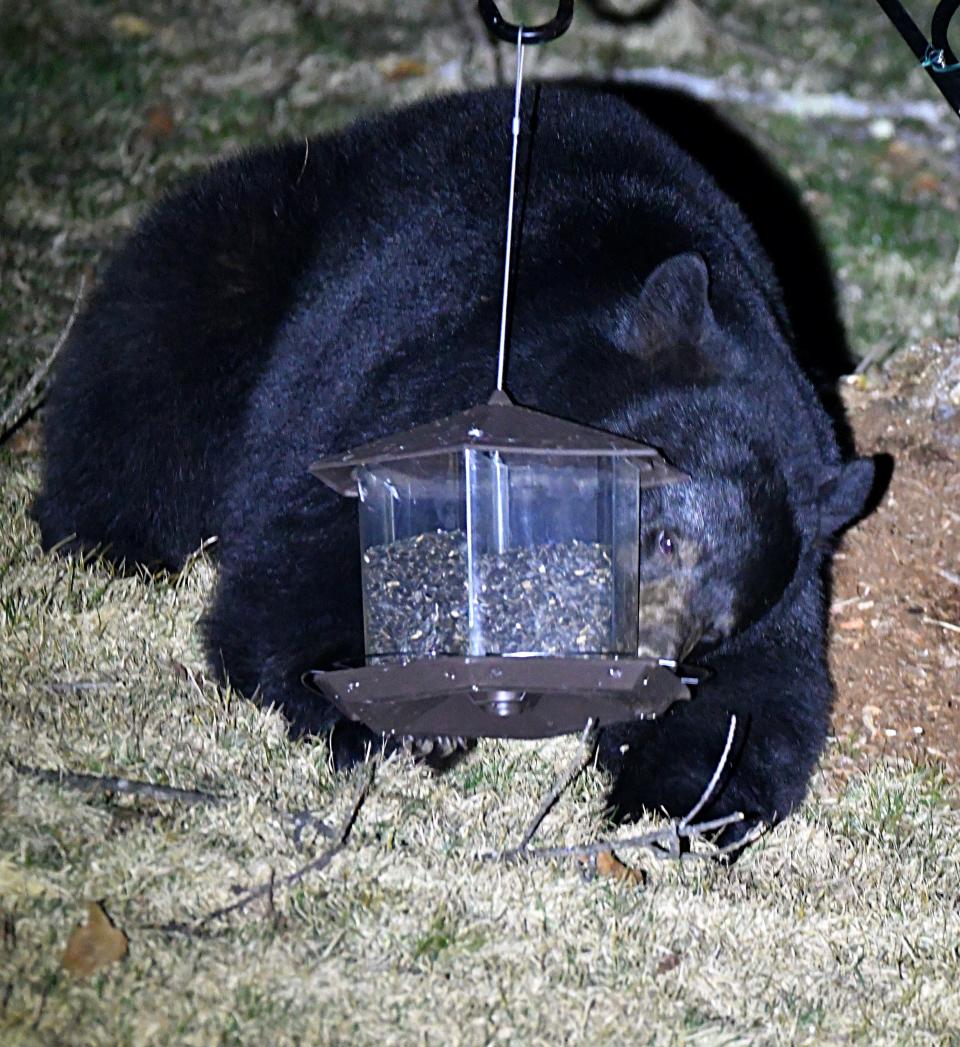
Remove bird feeders, pet food and human food from outside.
Secure all trash/recycling containers.
Clean and cover all grills.
To protect your pets, consider not leaving them outside in your yard alone, and when walking a dog, use a leash (so you can control them and remove them should you encounter a bear).
Bear aggression warning signs
That black bear's growl you hear on TV is just an overdub of a grizzly bear's roar.
Black bears have been responsible for fewer than 100 human deaths in North America since 1900, according to bear.org.
Most attacks by black bears are defensive reactions to a person who is too close.
Physical signs a black bear feels threatened include slapping the ground with its paws, huffing or blowing air forcefully through its nose or mouth and snapping its teeth together.
When a black bear is feeling threatened or scared, it will more likely run or climb a tree than try to attack.
If the bear becomes aggressive, contact your local police department for help. MassWildlife can also be contacted.
Find more tips on preventing conflicts with bears at mass.gov/bears.
Material from the New Bedford Standard Times and WickedLocal.com was used in this report.
This article originally appeared on The Patriot Ledger: South Shore bear questions answered: Sex, relocation and aggression

